Today in Tedium: The website Orkut.com is a site you’ve probably visited even if it feels like a vague memory today. It is Google’s first attempt at a social network, and one that became a success largely by chance; it started with modest goals and grew pretty quickly, although it never reached Facebook scale. Named for its creator, Orkut Büyükkökten, the network surged for a time, but eventually fell into decay, eventually going offline in 2014. After a few years of attempting to build a follow-up network, Orkut is back on that original domain, promising a follow-up. “I’ve always believed that a friendship is more than a friend request, and I have dedicated my life to helping millions of you build authentic connections with your neighbors, family members, employees and the beautiful strangers who come into your lives,” he wrote. You kind of want to root for Orkut Büyükkökten, knowing that the odds are against him in reviving this old social network in a new way. But it’s in his spirit that I shine the “didn’t make it” list on social media. Even if the community is dead, the people that made it are still worth discussing. — Ernie @ Tedium
Keep Us Moving! Tedium takes a lot of time to work on and snark wise about. If you want to help us out, we have a Patreon page where you can donate. Keep the issues coming!
We accept advertising, too! Check out this page to learn more.
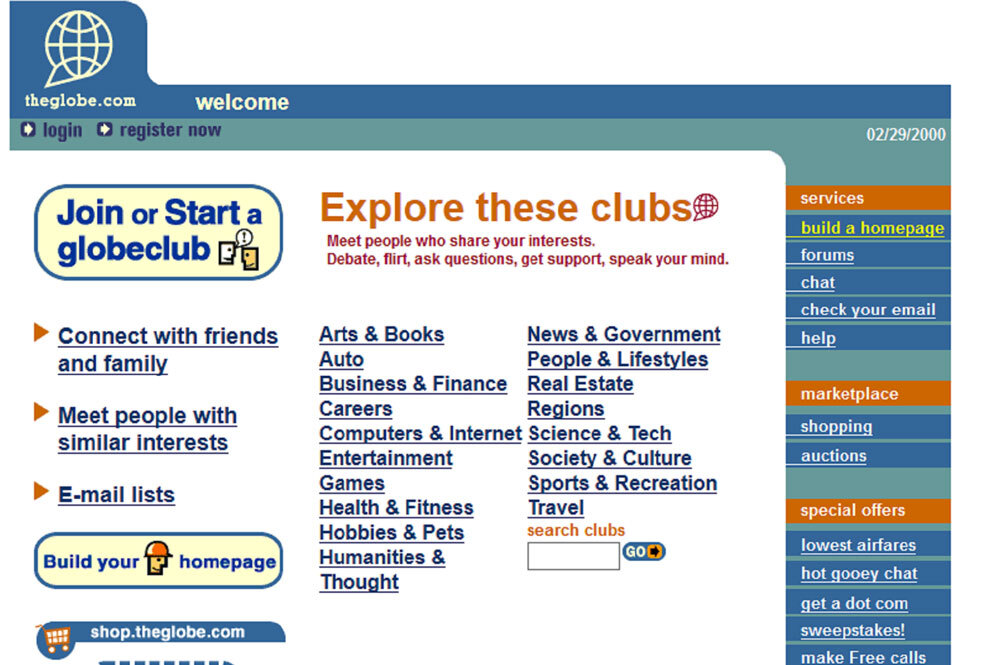
1. theGlobe.com
Era: Web 1.0, late 90s
User count at peak: 1.3 million
Status: Offline
While Friendster often gets described as the first social network, theGlobe, with its club-based focus, deserves to be a part of this conversation. Essentially a GeoCities take on the social network, the site blew up in short order—but failed to maintain its momentum, in part because its initial history is deeply tied with that of the original tech bubble, to the point where it acquired a number of assets unrelated to the business goals.
Not helping: Its cofounder, Stephan Paternot, was caught on camera, wearing plastic pants, stating, “Got the girl. Got the money. Now I’m ready to live a disgusting, frivolous life.”
Not everyone gets to be a billionaire, but probably good that guy in particular didn’t.
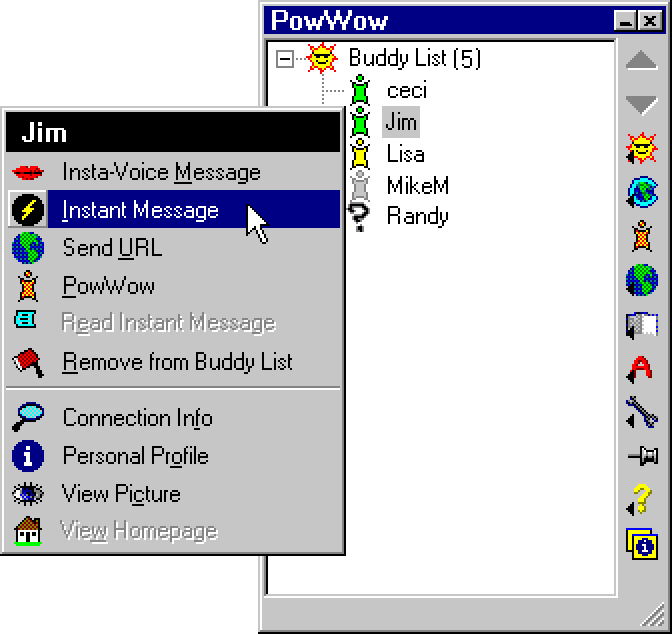
2. PowWow
Era: Web 1.0, late 90s
User count at peak: 2 million
Status: Offline
As I wrote in 2020, just before John McAfee’s passing, he had created what essentially was one of the first social networks, utilizing a proprietary chat program for Windows, one that slowly evolved into one of the first instant messenger clients.
McAfee’s path to building a social network was unusual—he had buried himself in Native American culture, only to present it in a heavily stereotyped form on his website Tribal Voice—but it ultimately led him in a direction that made him a trailblazer on areas such as online chat and audio-based discussion. You’ve never lived until you’ve done audio chat over a modem.
But while McAfee made a decent payday off the site, its new owners had bought a platform that by that time was based around leveraging access to AOL Instant Messenger—a bad investment in the early 2000s.
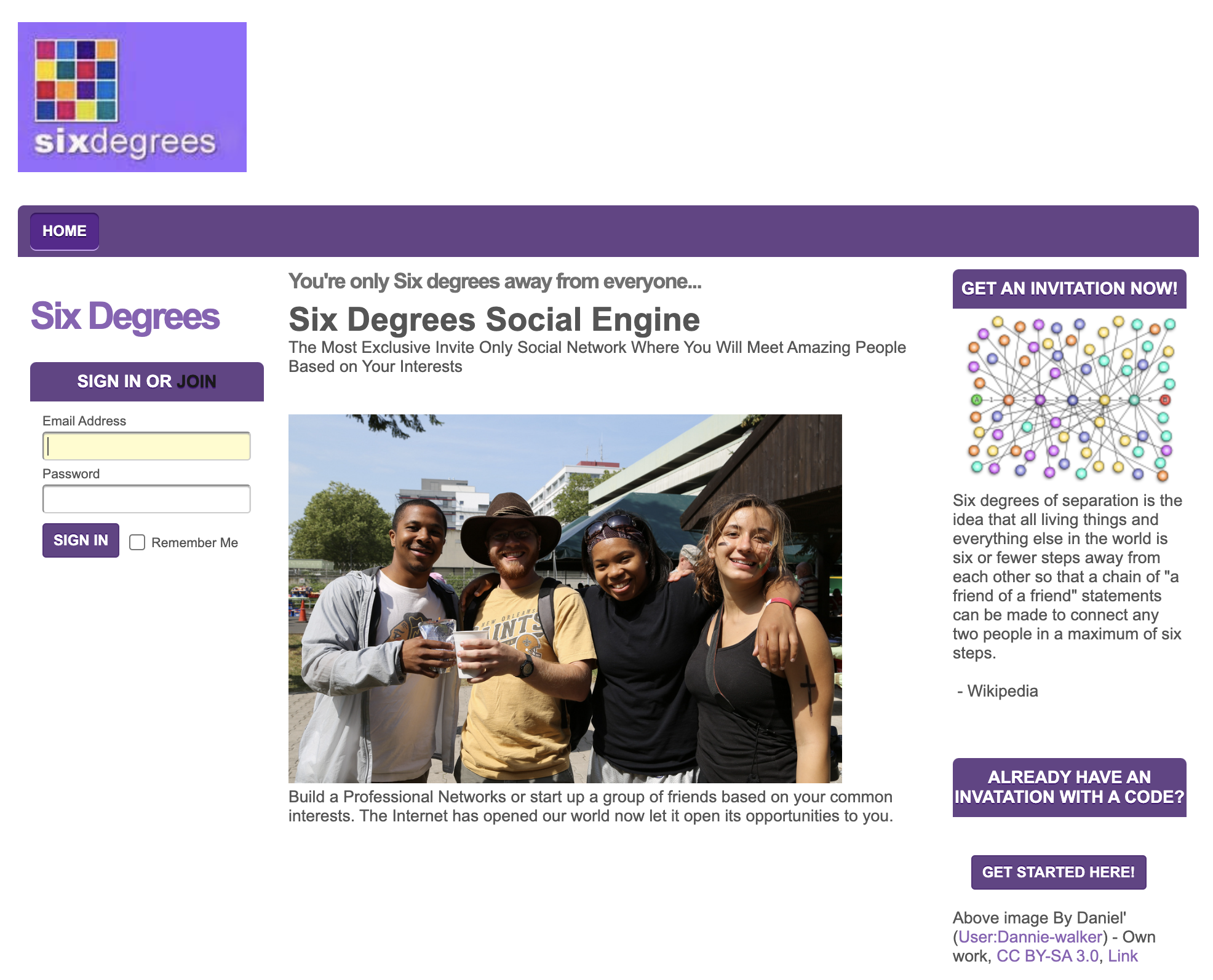
3. SixDegrees.com
Era: Web 1.0, late 90s
User count at peak: 3.5 million
Status: Active (surprisingly)
Yes, we can credit Kevin Bacon for the birth of modern social media. This site, dating to 1997, is often credited as introducing many of the ideas of modern social networks. In many ways, it’s the first social network that looks like a modern social network.
So, imagine my surprise when I loaded up SixDegrees, and found that it loaded up an actual website. Now, do I recommend you sign up to this site and try to find new friends? Absolutely not; the site does not support https, which is a big problem in the modern internet era, especially given that the site necessarily asks for your info.
But maybe you’re willing to take a chance.
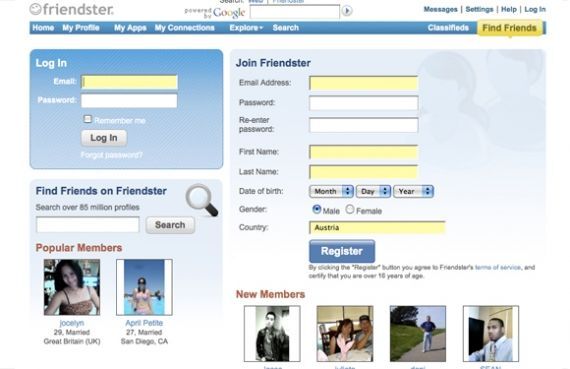
4. Friendster
Era: Web 2.0 circa 2003
User count at peak: 8.2 million
Status: Offline
The creation of Friendster has long heavily suggested that its creator, Jonathan Abrams, should have been what Zuckerberg became. But it didn’t, and that led it on a more interesting path. The network, which played with the degrees of separation thing just as SixDegrees.com did, had a degree of early buzz, but that Buzz was soon lost as MySpace and later Facebook came onto the scene.
But Friendster wasn’t killed by this factor alone. By the early 2010s, the company had found a large audience in Southeast Asia, with a large market in The Philippines in particular. The company eventually pivoted to a social-gaming website with local ownership, but it wasn’t enough to keep the site alive, and by 2015, the network had shut down for good—but not before selling off its patents.

5. Bebo
Era: Web 2.0 circa 2005, multiple relaunch attempts, most recently in 2021
User count at peak: 10.7 million
Status: Offline (but online just recently)
Bebo could have been the next MySpace—at one point, it had actually outpaced MySpace in popularity. But corporate mergers and shifting climates proved a tough hill to climb for the social network, which sold to AOL for $850 million in 2008—a deal which turned out to be great for founders Michael and Xochi Birch, who netted more than two thirds of that in cash, but which proved bad news for the network itself, as AOL famously didn’t know what to do with it.
In fact, their inability to properly manage the network meant that AOL sold the network for just $10 million two years later, and in 2013, the Birches bought the network back for just $1 million—a solid discount, given that they kept the money from the original sale.
Since then, the network has risen and fallen multiple times, and last year the Michael and Xochi Birch tried relaunching it in earnest again as a pandemic-era project, only to give up the ghost last month. You have to admire that they keep trying.
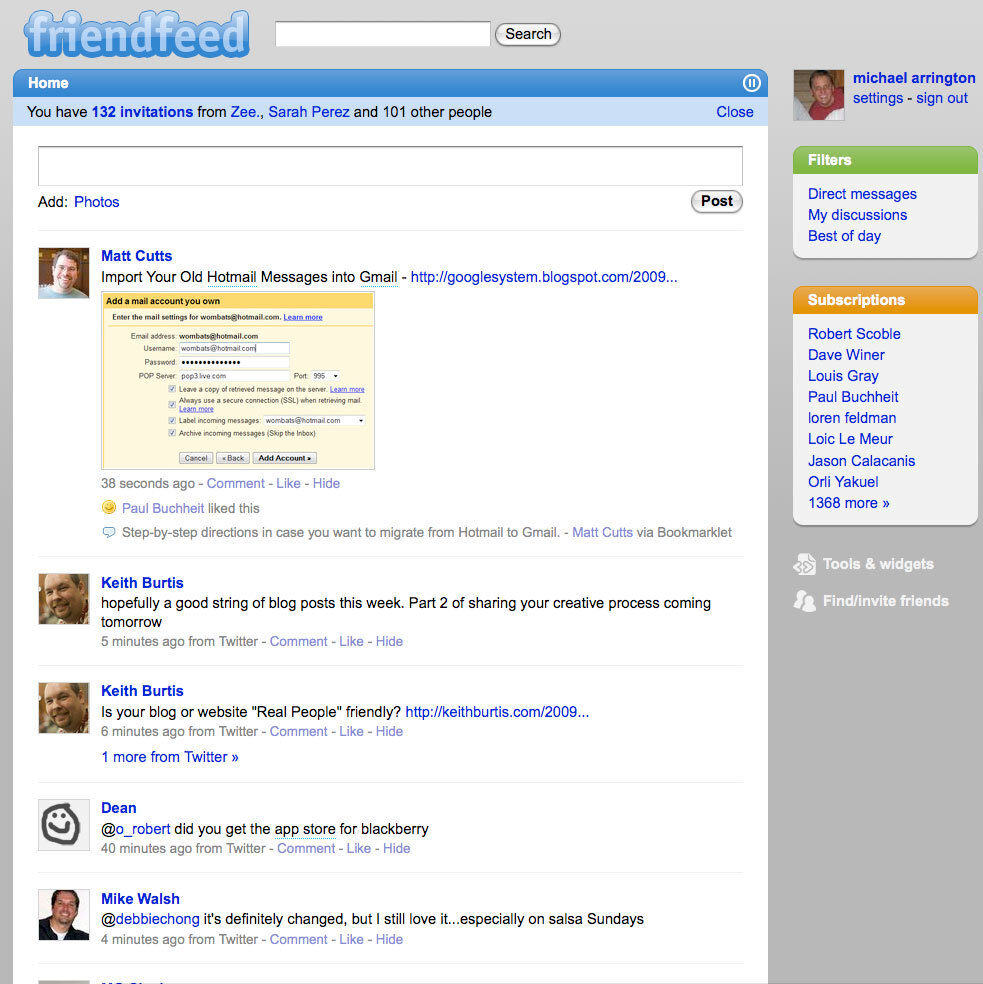
(via TechCrunch)
6. FriendFeed
Era: Web 2.0 circa 2007
User count at peak: 1 million
Status: Offline
There were really two interesting things about FriendFeed, one which came at the start of its life, and one which came near the end of it. The network was formed by a number of former Google notables, including Bret Taylor, Jim Norris, Paul Buchheit and Sanjeev Singh, figures that helped launch some of Google’s most famous tools, including Gmail and Google Maps. The network they built could be used as a dedicated network, but its magic was that it was effective at gathering together lots of different social networks and websites into an aggregated feed.
Never the most popular tool, but one with a strong cult following in the tech community, the thing that made FriendFeed interesting was what happened to it after it was acquired by Facebook—that is, not much for many years. While the tool wasn’t updated, and the acquisition seemed to be an effort to get the talented Taylor into an executive role with the company (he served as Facebook’s CTO), it wasn’t killed off until 2015, at which point Taylor had been gone for three years. It had a cult following that kept it alive longer than many of the other social networks on this list.
Taylor, in particular, would go on to have an even bigger career—today, he’s the co-CEO of Salesforce as well as Twitter’s current board chair.
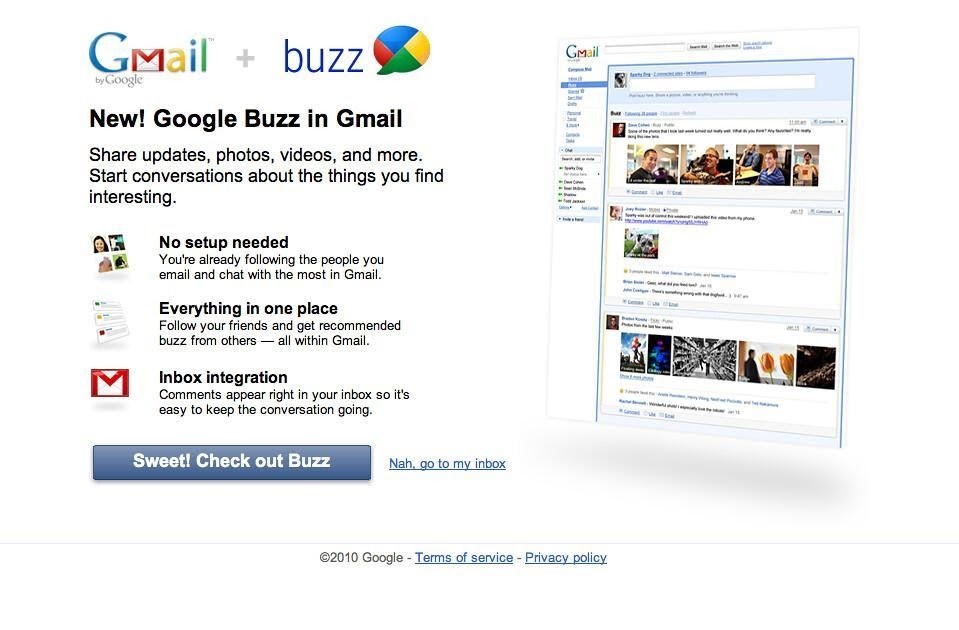
7. Google Buzz
Era: Web 2.0 circa 2010
User count at peak: 37 million (theoretically)
Status: Offline
Google, over the years has gained a questionable reputation for building out social networks based on the idea you have to opt out, rather than opt in. And Buzz was no exception, built as sort of a backdoor into making your Gmail account more social, with a mix of the social aggregator approach FriendFeed was known for. As MG Siegler wrote of Buzz during his famed run as a TechCrunch reporter: “Imagine taking elements of Twitter, Yammer, Foursquare, Yelp, and other social services, and shoving them together into one package. Now imagine covering that package in a layer that looks a lot like FriendFeed. Now imagine shoving that package inside of Gmail. That’s Buzz. If Google Wave is the future, Google Buzz is the present.”
The service was heavily compared to the legendary Google Wave as it directly replaced it, even though, honestly, it was kind of like comparing pour-over coffee to day-old decaf. It was not as good or as ambitious as the later follow-up Google+, and as a result, it was gone within two years.
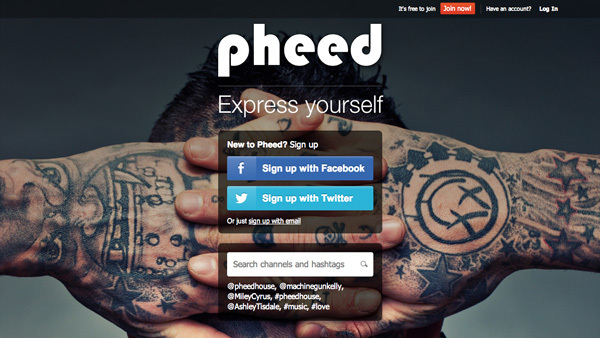
8. Pheed
Era: Smartphone era circa 2012
User count: 5 million
Status: Offline
This social network is one you’ve either never heard of or you remember fondly. But it is worth noting in this context. See, O.D. Kobo, the founder of Pheed, came up with the idea after using Instagram and feeling like it didn’t go far enough.
“But after two years I kept thinking, Why can’t I do more? Why didn’t they introduce video? Why can’t I upload an album? Wouldn’t it be interesting if Instagram offered text? Would Twitter have been shaking in their boots a little bit? Maybe it was necessary for other platforms to come about,” Kobo told Fast Company.
At the time, Pheed was heavily mocked for trying to do too much (this Gizmodo post is a good example), but in many ways, it seems like they were onto something. In part, its emphasis on celebrities and the pay-per-view feeds predicted the later successes of Patreon, Cameo, and OnlyFans. Was it the right mix? Probably not. But it was onto something.
And Kobo himself got a quick exit, with Pheed selling to Carlos Slim’s Móvil Media for $40 million just 18 months after it launched.
I almost feel bad for writing that it was “the social network you’d get if you combined MySpace’s business model with Limp Bizkit’s sensibility.”
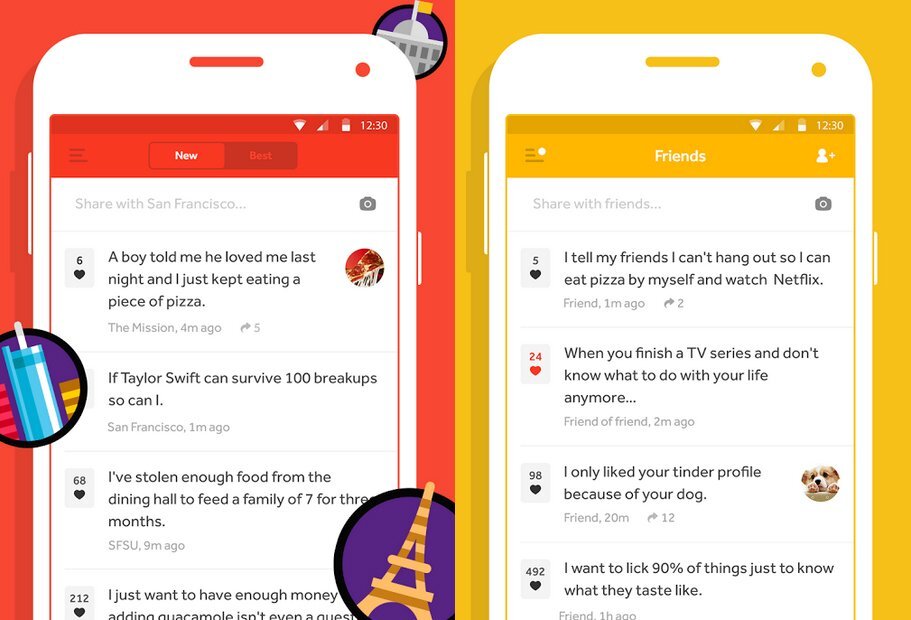
9. Secret
Era: Smartphone era circa 2014
User count: Undisclosed
Status: Offline
Part of a broader trend of social networks that emphasized anonymous messaging, Secret lived for just 15 months before one of its founders, David Byttow, shut down the network for good.
Secret was where you went when you wanted to blurt out an opinion on something without having your name attached to it. If this sounds like a bad idea for a social network, possibly even a worse one now, you don’t know the half of it. There was a degree of joy in using it without the vestige of identity affecting interactions, but in many ways, it encouraged some of our worst impulses.
Byttow cited this reason for shutting down the network—which had received notable amounts of funding from major venture capitalists. “I believe in failing fast in order to go on and make only new and different mistakes,” he said.
While the time for this type of network seems to be in the past, it’s worth noting that competing network Whisper never stopped operating, and YikYak relaunched just last year, while another business-focused anonymous network that launched after Secret, Blind, seems to be going strong.
10. Vine
Era: Smartphone era circa 2013
User count: 30 million
Status: Offline, with a successor app
Vine was a great example of an app that was amazing and well-appreciated that simply didn’t fit well with its corporate parent, Twitter. Had the network launched on its own, it would have likely found the kind of success that TikTok is seeing now.
The video app, based around six-second loops, was a joy to use and a joy to create with, leading to other, similar ideas. But it didn’t really fit with Twitter, which purchased the app before it even had a chance to launch on its own, but perhaps didn’t have the resources to turn Vine into its version of Instagram. Nonetheless, the shadow Vine left on modern social media is long, and it likely would have found success at a far bigger scale had the circumstances been different.
On the plus side, the spirit of Vine lives on as Clash, if you’re interested.
Now, when it comes to old hardware or software, if you really want to relive those experiences, you just have to know someone who has those tools. But in the case of social media, the experience is largely based around cultural cues of the particular moment, meaning that if you missed the network when it happened, you probably missed your opportunity to experience that particular thing.
(Vine is the exception, of course, because Vine meme videos spring eternal.)
Social networks are fascinating because they can’t be experienced after the fact, and there are some noble experiments I haven’t even mentioned here (such as App.net, which I’ll likely write a full piece about) that did important things but whose value might be hard to explain for folks that weren’t there.
Just because we’re all on Twitter and Facebook and TikTok and Instagram doesn’t mean those were the only shapes of social media that were possible. Any of the networks on this list could have dominated—had the circumstances played out slightly differently.
--
Find this one an interesting read? Share it with a pal! And if there’s a social network I missed, a reminder that I can always do another list like this.





